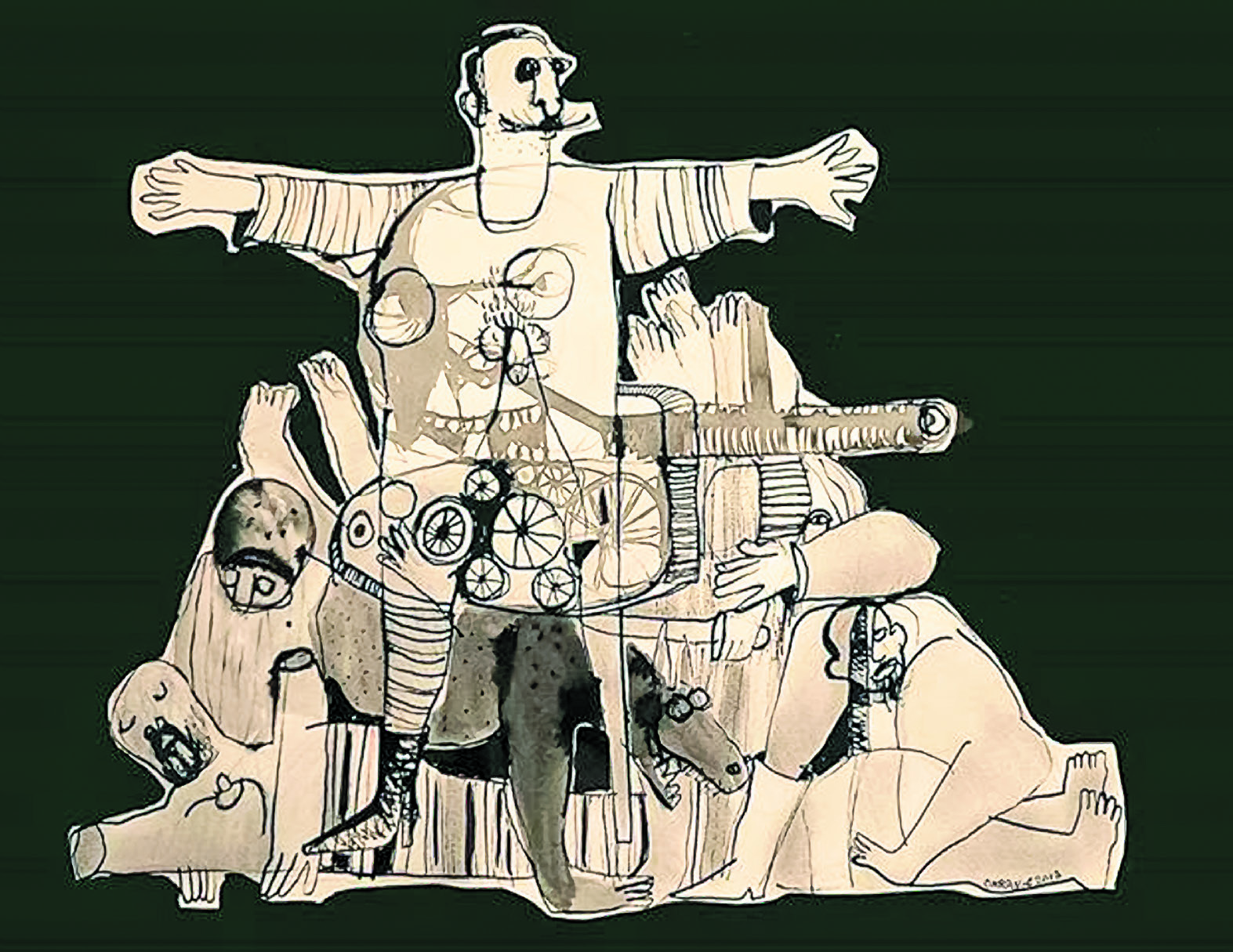
'In 2013 Sana Yazigi, a Syrian graphic designer from Damascus, launched the online archive The Creative Memory of the Syrian Revolution, consisting of works created by Syrian artists during the uprising.
"From the early days of the revolution," Yazigi says, "I was amazed to witness an incredible outpouring of artworks. I didn’t want them all to disappear, to be forgotten. I wanted to keep a record. There was a sense of urgency, a need to document what was going on."
“When I moved to Beirut in 2012," Yazigi says, "I began writing, recording and collecting [stories of the Syrian people]. When I saw the sheer amount of material being created, I surrounded myself with a team to gather it all together.”
The website documents paintings, music, graffiti, videos and cartoons among others, constituting an exceptional wartime archive. “Little by little, a list of works was drawn up," says Yazigi. "We were all running from the régime at the time, working anonymously in an atmosphere of mistrust and fear. Many of the artists were anonymous too. We’d discover their works on blogs and on Facebook. We documented everything we came across to add to the archives."
“Over time, I emerged from anonymity and started contacting the artists," says Yazigi. "Most were enthusiastic about the project. Even today, we are still discovering works which were never made public at the time, for fear of reprisals.”
The Creative Memory of the Syrian Revolution continues to grow. The site’s second in-house production, MAP, links archive material to locations across Syria, connecting documents with dates, categories, keywords and authors. The website’s user-friendly second version introduces the Syrian people, giving voice to the dreams and tragedies of the revolution.
One initiative, Idlib Walls, archives all the graffiti from the city of Saraqib found online. More than 360 artworks are presented on a timeline which is periodically updated.
Yazigi says she will continue her mission. “Ultimately, we’d like to see our archive enter the national archives, because once the war is over, the history of the revolution must be given back to the people of Syria. The archive is part of our collective memory. The revolution has brought about clear social and historical changes”.
In addition to the websites, there is also a book and a travelling exhibition. The Story of a Place, the Story of a People, 2011-2015 is a collection of words and images retracing the uprising in each of 50 locations. The text describes the early days of the revolutionary movement, as well as the dynamic forces that would see it spread.'








One initiative, Idlib Walls, archives all the graffiti from the city of Saraqib found online. More than 360 artworks are presented on a timeline which is periodically updated.
Yazigi says she will continue her mission. “Ultimately, we’d like to see our archive enter the national archives, because once the war is over, the history of the revolution must be given back to the people of Syria. The archive is part of our collective memory. The revolution has brought about clear social and historical changes”.
In addition to the websites, there is also a book and a travelling exhibition. The Story of a Place, the Story of a People, 2011-2015 is a collection of words and images retracing the uprising in each of 50 locations. The text describes the early days of the revolutionary movement, as well as the dynamic forces that would see it spread.'







